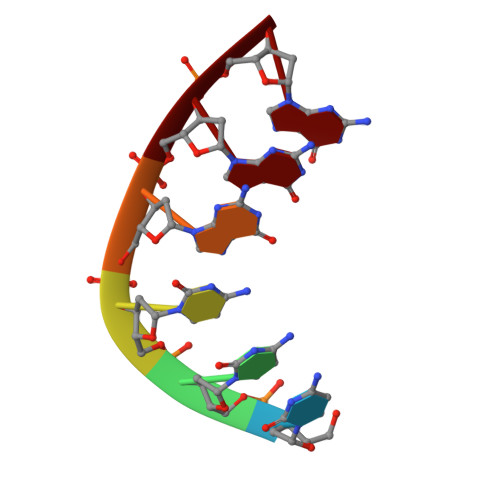Racemic crystal structures of A-DNA duplexes.
Mandal, P.K., Collie, G.W., Kauffmann, B., Huc, I.(2022) Acta Crystallogr D Struct Biol 78: 709-715
- PubMed: 35647918
- DOI: https://doi.org/10.1107/S2059798322003928
- Primary Citation of Related Structures:
6GN2, 6GN3 - PubMed Abstract:
The ease with which racemic mixtures crystallize compared with the equivalent chiral systems is routinely taken advantage of to produce crystals of small molecules. However, biological macromolecules such as DNA and proteins are naturally chiral, and thus the limited range of chiral space groups available hampers the crystallization of such molecules. Inspiring work over the past 15 years has shown that racemic mixtures of proteins, which were made possible by impressive advances in protein chemical synthesis, can indeed improve the success rate of protein crystallization experiments. More recently, the racemic crystallization approach was extended to include nucleic acids as a possible aid in the determination of enantiopure DNA crystal structures. Here, findings are reported that suggest that the benefits may extend beyond this. Two racemic crystal structures of the DNA sequence d(CCCGGG) are described which were found to fold into A-form DNA. This form differs from the Z-form DNA conformation adopted by the chiral equivalent in the solid state, suggesting that the use of racemates may also favour the emergence of new conformations. Importantly, the racemic mixture forms interactions in the solid state that differ from the chiral equivalent (including the formation of racemic pseudo-helices), suggesting that the use of racemic DNA mixtures could provide new possibilities for the design of precise self-assembled nanomaterials and nanostructures.
Organizational Affiliation:
Université de Bordeaux, CNRS, Bordeaux Institut National Polytechnique, CBMN (UMR 5248), 33600 Pessac, France.

















